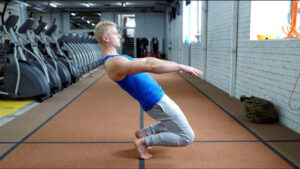People make it seem like common sense that there are inherently “good” and “bad” ways to do exercises. I frequently hear things like … “squatting knees past toes is dangerous!” or “deadlifting incorrectly will cause you to slip a disc.” This isn’t the case.
It can be safe to train seemingly “dangerous” lifts. For example, deadlifting with a rounded back (Jefferson Curls) or squatting your knees far past your toes (Sissy Squats) can be great exercise prescriptions for someone needing that type of stimulus.

Exercises can be done in different ways. No one way can be deemed “right or wrong” until we address what we hope the exercise will achieve. We can tweak the way someone performs an exercise to get a specific result. For example, I might have someone do a squat with a significant hip-hinge/forward lean to emphasize the posterior chain, OR I might have them do it very upright where the knees move more forward to stress the knees and quads.
With that said, is there a time and place for the “form police?” Here are some things to consider with the way that an exercise is performed, and whether or not it’s “safe vs. dangerous” or “effective vs. ineffective”:
We need to consider safety from accidents: If someone is extremely new to lifting, they can easily hurt themselves. They can drop a barbell on their face, lose their balance with a ton of weight on their backs, etc.

We need to consider safety from overload: Too much too soon in any context can be a recipe for injury. If we modify an exercise, we can shift loads to unprepared tissues. This needs to be considered. Do we need to lower the load initially to allow for safe adaptation?
Efficiency or lack thereof: Efficiency is important when the goal is simply to move the most weight. For example, for a powerlifter trying to squat, bench, or deadlift the most weight possible, there are techniques that help to facilitate that. Or maybe you want to reduce the efficiency of an exercise to make it harder… there is such a time and place!

So hold your tongue before spitting form cues at your fellow lifter. Also, be wary of dogmatic advice regarding lifting techniques and form. There are no absolutes.
* * *
Thanks for reading! If you’d like to learn more about who we are and what we do, click this link: https://upandrunningpt.com/

